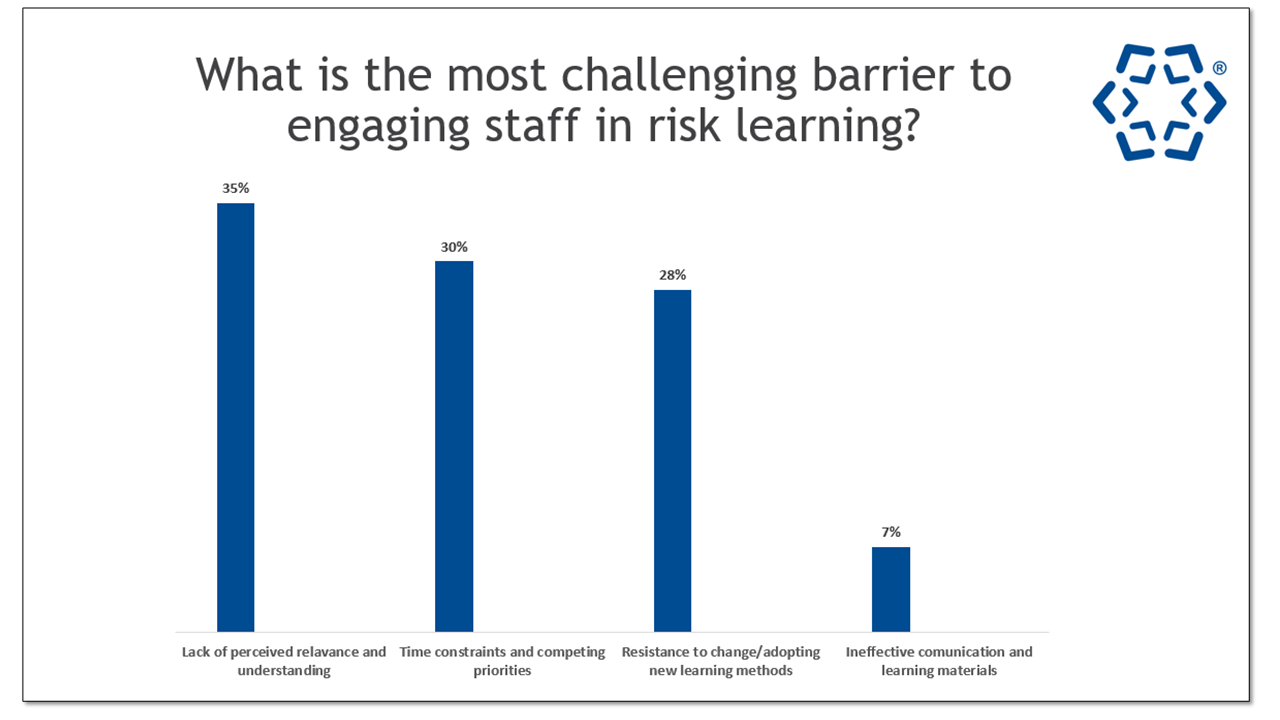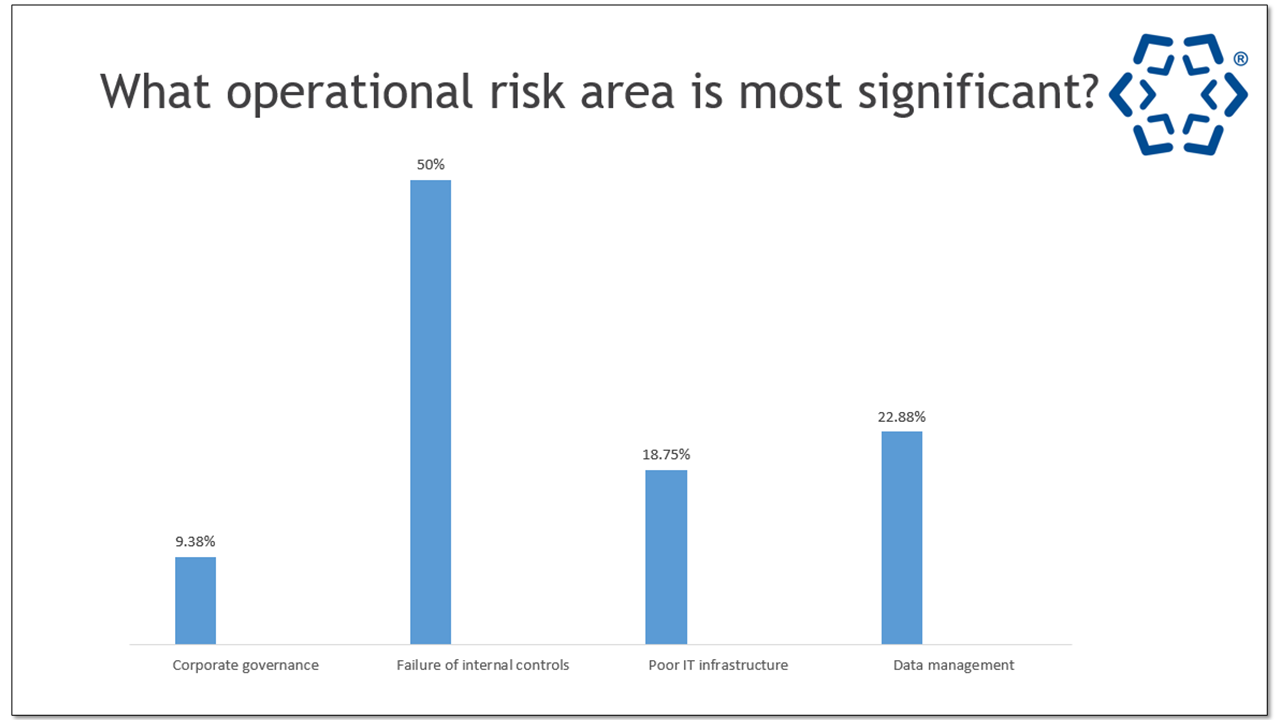Engaging employees in risk learning is a challenge. However, risk awareness is vital. Discover how to simultaneously engage your staff and reduce risk.
Compliance training plays a significant role in mitigating operational risk, and involving employees actively in this process enhances its effectiveness. We were recently joined by industry expert Swapan Sawhney to discuss the importance of engaging employees in risk learning to reduce operational risk.
Operational risk presents significant challenges to businesses, particularly in areas such as data entry, internal control failures, inadequate IT infrastructure, and data management. However, motivating employees to actively participate in risk learning can be quite a hurdle.
What is operational risk?
Operational risk refers to the possibility of experiencing losses due to insufficient or unsuccessful internal processes, personnel, and systems, or due to external occurrences. This definition encompasses legal risk but does not cover strategic and reputation risk.
For operational risk to be truly understood throughout the organisation, it's important to get the tone right from the top. It needs to be given priority in an organisation and made clear that it is a priority.
Why is employee engagement important?
Well-trained employees are better equipped to identify and mitigate risks, contributing to improved risk management processes. This, in turn, helps prevent some of the main consequences of operational risk, which include public censure, reputational damage, and potential impacts on the company's share price.
Moreover, compliance training reduces the likelihood of changes to senior management and the need for multi-year remediation programs due to non-compliance issues. Ultimately, a compliant workforce enables firms to navigate business development without constraints and maintain a competitive advantage.
"I think the key in complying with mitigating actions is using data to demonstrate the impact of not complying and why each person within an organisation plays a part in anticipating risks such as fraud, legal risks
How engaged are staff in risk learning?
Some of the key takeaways from our webinar session indicate that firms can mitigate negative consequences by improving risk management practices, enhancing reporting mechanisms, and promptly addressing identified issues to ensure effective risk mitigation and business continuity.
One of the main issues is employee engagement in training. We posed the question of what the most challenging barrier is to engaging employees to our webinar audience. The results are unsurprising, with a lack of perceived relevance and understanding and time constraints being the biggest hurdle to overcome.

"I think the key to complying with mitigating actions is using data to demonstrate the impact of not complying and why each person within an organisation plays a part in anticipating risks such as fraud, legal risks, fiduciary risks etc. From experience, the best way to do that is for senior management to message that front-line teams should make time to focus on these issues and that within front-line functions, such matters are regularly discussed in team meetings so that it is a natural part of their day-to-day roles."
How to reduce operational risk with training?
It's important to ensure employees can engage in risk learning by helping to identify areas where staff lack expertise in understanding relevant laws and regulations, as well as pinpoint instances where roles and responsibilities are unclear. This helps to target learning for individuals. Some other methods include:
- Interactive content & innovative delivery
Use interactive and engaging training materials, such as videos, checklists, top tips, quizzes, simulations, gamification and case studies. Interactive elements make the learning process more dynamic and enjoyable.
Bite-sized learning is a method that 68% of our webinar audience believe has the most impact on engaging staff in training. This ticks both the interactive content and innovative delivery boxes. - Relevance and importance
Clearly communicate the relevance and importance of the training to employees. Help them understand how training will contribute to their professional growth, job performance, and the success of the organisation. Keep content relevant to staff by using scenarios and case studies that they can relate to. - Flexible learning paths
Offer flexibility in training delivery methods and schedules. Providing options for self-paced learning, online courses, and in-person workshops accommodates different learning preferences and work schedules. Adaptive learning paths are delivered at the point of need when staff actually need to engage. - Feedback and improvement
Gather feedback from employees about their training experiences. Use this input to continuously improve the training content, format, and delivery methods. This promotes employee empowerment and will encourage - Continuous learning culture
Foster a culture of continuous learning within the organisation. Emphasise the value of ongoing skill development and provide resources for employees to pursue learning beyond mandatory training. The value of topped-up learning is to keep knowledge updated via techniques such as spaced learning.
Our newly-accredited Global Risk library offers a wide range of risk management courses. The e-learning courses in our library provide a quality standard of training which has been approved by the IIRSM. These courses are designed to train your staff in risk fundamentals and application and are available in 11 languages.
Which area of operational risk needs monitoring?
The negative consequences of operational risk can be significant. These can stretch from financial loss and reputational damage to disruptions in operations and everything in between.
In our webinar, we asked the audience what operational risk area they considered the most significant for businesses. Although the results indicate failure of internal controls as the most significant area, the interaction between all these operational risk components is what regulators are concerned with.

Here is a breakdown of what to monitor in these key areas of operational risk:
- Corporate Governance
Operational risk management requires addressing several critical issues. These include the need for stronger board and senior management oversight, ensuring comprehensive reporting of key risks to the Board, establishing timely escalation protocols, and taking effective action to rectify issues highlighted by internal audits and regulators. - Risk and Compliance
Firms need to showcase sufficient staffing and skill levels, clarify roles between the first line and second lines of defence, establish a comprehensive enterprise-wide risk management framework that encompasses all risks, and ensure proper control assessment for regulatory compliance. - Internal Controls
It's important to conduct a gap analysis of your enterprise risk management framework and internal control systems to pinpoint areas needing improvement. Identifying where staff lack expertise in understanding relevant laws and regulations is crucial for targeted training efforts. Clarifying roles and responsibilities is equally vital to streamline operations and accountability. - Data Management
Firms need to define distinct data ownership roles and responsibilities. This involves creating well-defined data policies, procedures, and standards that are uniform across the organisation. An inventory of authoritative data sources should be compiled, while a program for ongoing enhancement of data quality must be established. The implementation of effective reporting and escalation mechanisms for data quality concerns is also vital. - Systems & IT Infrastructure
It is vital to conduct a comprehensive assessment of current systems, applications, and IT infrastructure to ensure their suitability. Modernising these components and streamlining disparate systems can enhance functionality. Reducing reliance on End-User Computing (EUC) tools while maximising Straight-Through Processing (STP) can help improve accuracy and efficiency.
Engaged employees act as a vigilant human element, actively participating in risk identification, reporting, and mitigation efforts. Our compliance digitisation tools transform staff compliance with innovative delivery of training which forms the foundation of risk management.
Looking for more compliance insights?
SkillcastConnect is our new community bringing together compliance professionals for unique peer group networking free of vendors.
As members of our unique and complimentary community, you can join our live webinars and face-to-face events to interact in person with thought leaders and your peers and access hundreds of digital resources on a variety of compliance, learning, and regulatory topics to support you and your teams along your journey. Join the discussion!
- Networking Events
- Expert-led Webinars
- CCO Roundtables
- Compliance Workshops
- 100+ free video-based learning courses
We also have additional free resources such as e-learning modules, microlearning modules, and more.
Explore our collectionWritten by: Samantha Martin-Woodgate
Samantha has worked in business growth for over two decades. She has experience building brand awareness and personable and creditable relationships across the C-Suite. Her passion is people and creating opportunities for them to connect, collaborate and share knowledge. Sam is currently building the Skillcast community, one relationship at a time.




